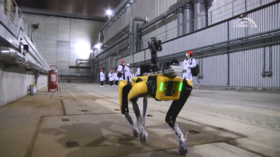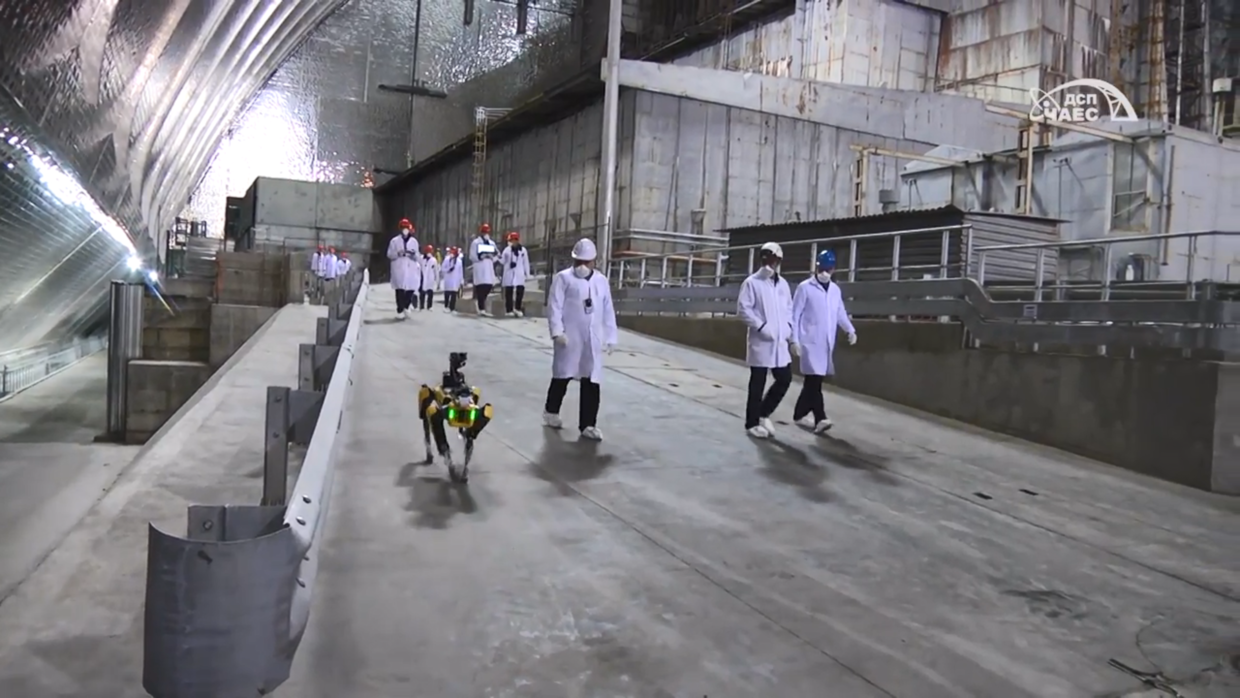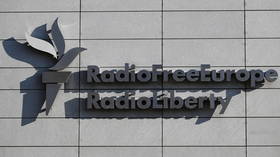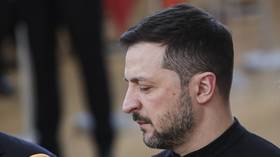Well he's unlikely to be bothered by radioactivity! Scientists test robotic dog set to monitor Chernobyl radiation levels (VIDEO)

It's one of the most hazardous locations on earth, and best avoided by humans. So, scientists from Ukraine and Britain's Bristol University have tried out SPOT, the autonomous robot dog, near the stricken Chernobyl power plant.
The technology was used to scan the level of contamination and trace poisoned areas, near the reactor which caused the worst nuclear disaster in history, back in 1986.
Ukraine’s State Agency responsible for Exclusion Zone Management conducted the tests in cooperation with the scientists from Bristol. The SPOT robot, developed by American company Boston Dynamics, was fitted with a radiation sensor and tested in three locations in the Chernobyl exclusion zone with notoriously high contamination levels.
The goal, according a Facebook post by the agency, was to create 3D contamination maps of the area and possibly find previously unknown radiation hotspots.

Despite being a purely electro-mechanical device, the robot was required to take the same safety precautions as its human operators: for example, it walked around in protective footwear.
Aside from SPOT, the Chernobyl tests also involved flying drones, as well as stationary LiDAR scanners, using photogrammetry technology to create 3D representations of the area.
Boston Dynamics advertises SPOT as a four-legged robot with sophisticated movement logic, allowing it to inspect and traverse difficult terrain automatically. First introduced in 2016, it’s been available for sale since June for $74,500, though select American organizations were given access to the technology prior to that.
It has already proven itself useful during the Covid-19 pandemic, as some hospitals have used the devices to assess patients remotely while maintaining social distancing.

It’s unknown whether Ukraine has plans for the permanent use of SPOTs.
Since the 1986 meltdown at the Chernobyl nuclear power plant, there’s been a 2,600 square kilometer exclusion zone around the site due to dangerous levels of radiation. However, it has also proven to be a valuable environment for scientific work and even attracts some fearless tourists.
Think your friends would be interested? Share this story!















